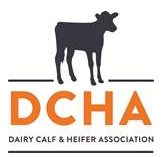
 Mycoplasma bovis infection is caused by mycoplasma, the smallest free-living pathogen in animals. The pathogen attaches itself to mucosal surfaces, then invades tissue and liberates toxins that cause severe tissue damage. M. bovis can also suppress the immune system and increase the severity of disease caused by other pathogens.
Mycoplasma bovis infection is caused by mycoplasma, the smallest free-living pathogen in animals. The pathogen attaches itself to mucosal surfaces, then invades tissue and liberates toxins that cause severe tissue damage. M. bovis can also suppress the immune system and increase the severity of disease caused by other pathogens.Symptoms can appear two weeks after birth, with severe symptoms appearing later.
Symptoms include:
- Inner-ear infection. Calf may hold its head slightly lower than normal, have droopy ears and tilt its head.
- Discharge from eyes and nose.
- Increased respiration. Calf may experience faster breathing and struggle to draw air in and out of the lungs.
- Frequent, hacking cough.
- Fever. Low-grade early on, with minimal fever as infection becomes chronic.
- Arthritis. Usually seen one week after pneumonia and can involve swelling around the joints.
- Mastitis. Udder swelling and decreased milk production that is watery, flaky and tan or brown in color.
- Infection spreads easily via cough, nasal secretions and direct contact with infected animals, milk, feedbunks and waterers. Infected cattle do not respond well to treatment so prevention is necessary to stop the cycle of infection.
"Working with your veterinarian to develop a prevention strategy is the best way to keep mycoplasma from creating chronic problems with your herd's health and profitability," said Dr. Roger Winter, veterinarian, AgriLabs. "Proper vaccination with viral vaccines like Titanium® and Master Guard® is important. Vaccinating with MpB Guard® also may help reduce the incidence and severity of disease."
8.21.2013